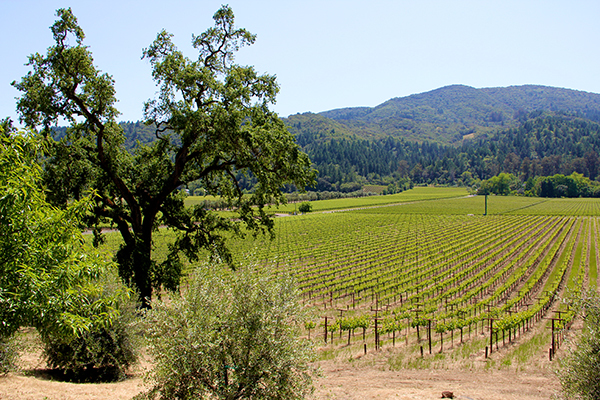
Roberto Escobar
Roberto “Bobby” Escobar is general counsel, and an environmental and labor and immigration advisor.
While the term “farm subsidies” often conjures images of endless
Midwestern grain fields, California’s agriculture is different — defined by
almonds, pistachios, wine grapes, strawberries, and a vibrant mix of fruits,
vegetables and dairy spread across regions as varied as the Sierra foothills
and the Central Valley. Yet the nation’s largest agricultural state by cash
receipts, which supplies a rich array of specialty crops to both domestic and
international markets, is often under-served by subsidy programs built for row
crops like corn and soybeans.
For decades, the federal government’s support system has been
rooted in traditional commodity models. Program design and distribution
formulas emphasize land area and yield for a narrow group of crops, favoring
regions where those commodities dominate both acreage and politics. This system
made sense for an era of bulk grain exports and weather-driven volatility. But
it breaks down badly for California’s farms, which operate under markedly
different economic realities.
The unique character of California agriculture
California’s agricultural success is built upon diversity,
adaptability, and a focus on high-value, labor-intensive specialty crops.
Unlike grain commodities that can be stored for months or traded on futures
markets, these crops are perishable and require major up-front investment — from
specialized irrigation and pest management to processing facilities and
year-round labor.
Much of this output is destined for export, making growers
acutely vulnerable to swings in global trade policies, logistics bottlenecks
and currency shifts. Tariff disputes such as the U.S.-China trade showdown
exposed how little protection legacy subsidy programs offer to producers of
nuts, fruit, wine and vegetables.
The 2018 round of federal relief under the Market Facilitation
Program (MFP) largely bypassed those most at risk, covering mainly soybeans,
corn, wheat, and cotton. Only in 2019 did the program expand to include certain
California specialty crops — almonds, pistachios, walnuts and fresh grapes — at
published rates such as $146 per acre for nuts. Even then, payments were
delivered in multiple tranches, arriving months after losses had already
rippled through farm finances.
Why the old model fails
California’s leading crops — almonds, grapes, berries, citrus,
avocados and dairy — occupy a small fraction of the acreage recognized by
standard federal aid formulas. The shocks California farmers face come through
global shipment channels, not just weather.
Specialty operations face year-round expenses for labor, energy,
water and transport long before a single box is shipped overseas. When tariffs
or supply disruptions strike, the financial risk is immediate. Waiting months
for a distant subsidy payment can turn a manageable challenge into a crisis.
The high cost of doing business in California — land, water,
environmental compliance and wages — magnifies the pain when relief arrives
late. Simply put, per-acre formulas and slow distribution schedules fail to
reflect the real risk profile of West Coast agriculture.
Blueprint for modernizing farm support
Fixing the mismatch begins with broadening the eligibility and
scope of farm subsidies. Future programs should name California’s flagship
crops as primary candidates for support, or apply clear, national standards
such as the share of a crop’s production sold abroad or evidence of
tariff-related harm. This ensures aid targets real economic vulnerabilities
rather than politically favored commodities.
Compensation formulas should move away from flat acreage payouts
toward metrics based on verifiable economic damage. Whether it is a drop in
export prices or spikes in packaging and equipment costs, payments should
reflect revenue lost or costs incurred, not land area alone. Such alignment
prevents windfalls for large landholders with little actual exposure and
ensures that small and mid-scale farms are not left behind.
Timeliness is equally critical. Modernized programs should
deliver partial advance payments swiftly after a verified disruption — within
about 45 days of a tariff event — followed by quarterly adjustments as more
precise data emerge. Digital applications through the Farm Service Agency
(FSA), coordinated with trusted crop boards and local agencies, can minimize
paperwork and level the playing field for family-scale operations.
Payment caps and streamlined reporting protect equity and
administrative feasibility. Allowing producer cooperatives or associations to
apply collectively democratizes access, while a simplified “fast lane” for
smaller farms ensures those with limited resources can get help quickly. When
subsidies also consider indirect effects — such as inflated input costs from
new tariffs on imported machinery or steel — support becomes both fairer and
more comprehensive.
Implementation in a complex landscape
California’s agricultural variety creates both hurdles and
opportunities. Robust, trusted data on yields, exports and farm operations
already exist through the California Department of Food and Agriculture (CDFA),
the University of California’s Cooperative Extension, and commodity boards like
the Almond Board or Wine Institute. Tapping these resources for verification
and payment delivery reduces redundancy and fraud.
Partnerships between state and federal agencies can enable
region-specific responses to crises as they develop. Bridge-loan or credit
facilities — convertible to partial grants once losses are documented — would
keep farms solvent while longer-term relief is processed.
State-level programs such as CDFA’s California Underserved and
Small Producers (CUSP) Program already provide grants and technical assistance
to small or disadvantaged producers. These can complement federal subsidy
structures by ensuring local outreach and inclusion.
To maintain accountability, all new programs should include
sunset clauses and mandatory review periods, allowing adjustments as California
agriculture evolves and economic data improve.
The broader rationale: Why it matters
Supporting diverse farms in California is more than a state
concern. The state produces about 11-12% of all U.S. farm cash receipts and
dominates national exports in almonds, pistachios, walnuts, dairy and fresh
produce. Shocks to this system reverberate through food supply chains
nationwide — raising consumer prices and threatening rural employment across
processing, shipping and retail sectors.
Every dollar delivered swiftly and efficiently to growers does
more than stabilize farm income — it sustains the economic infrastructure of
rural communities and the consumer food system. Investing in relevant,
responsive subsidies for California is not state favoritism; it is strategic
economic resilience for the entire country.
Toward a modern stability system
The call for reform is clear: California agriculture needs a
subsidy framework built for its crops, costs and export vulnerabilities. Future
farm bills should enshrine fair and inclusive coverage for specialty crops, tie
payments to real economic harm, and ensure funds arrive before short-term
disruptions become long-term insolvencies.
If designed with equity, precision, and timeliness, subsidies
can move beyond being a mere safety net. They can become a stability system — one
that keeps America’s food supply robust, its farms competitive, and its
agriculture thriving on a truly level field, no matter where or what is grown.

